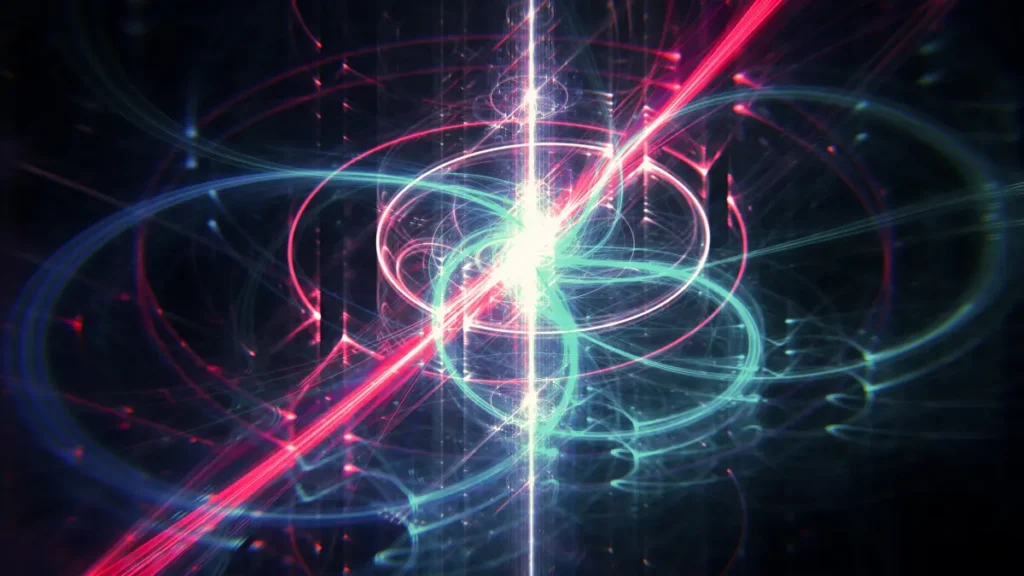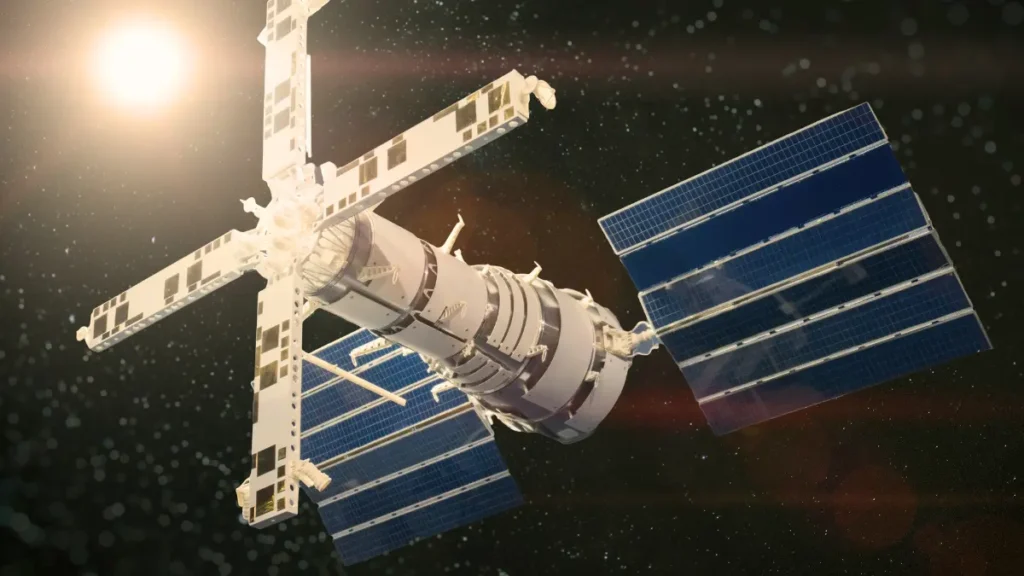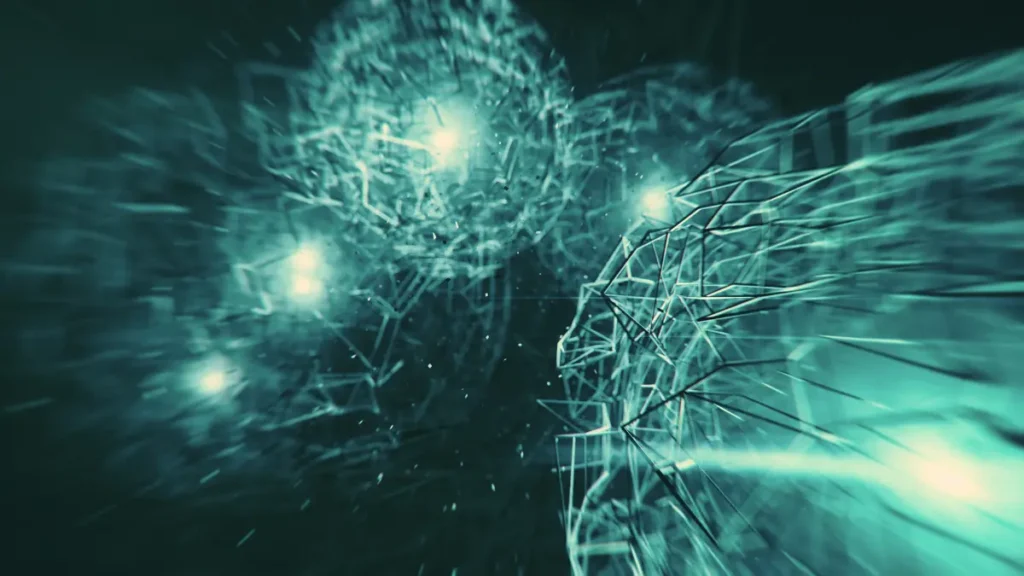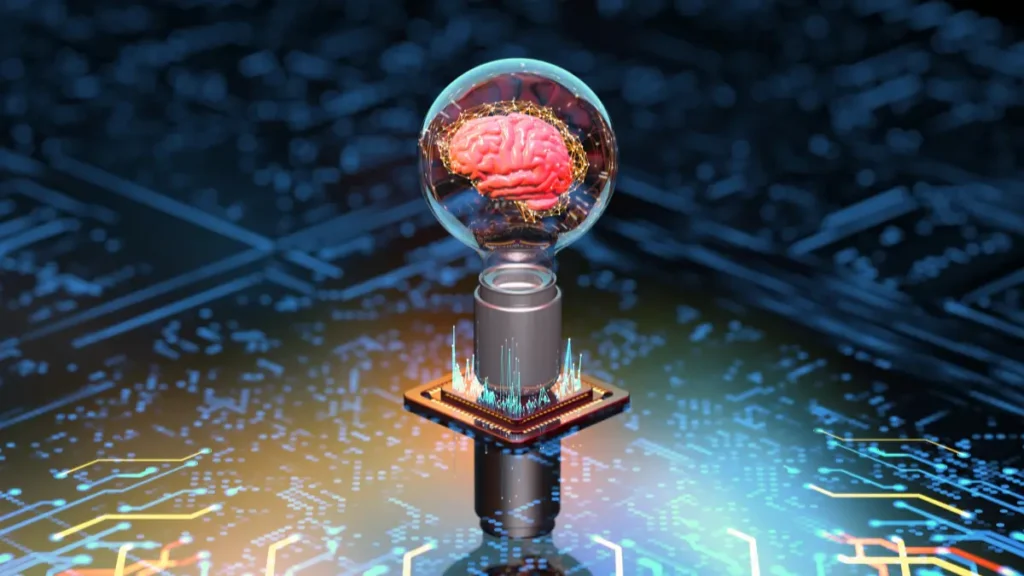Quantum Sensing: Ever feel like you’re fumbling around in the dark, grasping for answers just beyond your reach? You’re not alone. Scientists have been searching in vain for clues to some of the universe’s deepest mysteries, like dark matter and quantum gravity. But thanks to the dawn of a revolutionary new technology called quantum sensing, we may finally be able to shed some light on these elusive riddles. With devices like quantum sensors and atomic clocks, researchers can now measure nature’s most fundamental forces with unprecedented precision.
As we enter this uncharted frontier, quantum sensing promises to illuminate the hidden workings of the quantum realm, revealing insights that could unlock innovations in quantum computing, particle physics, and beyond. So get ready to peek behind the cosmic curtain as we explore how quantum sensing is shining a light on the unknown. This mind-bending, cutting-edge field could illuminate secrets of our universe we can only begin to imagine. The future is quantum, and it’s looking brighter than ever.
What Is Quantum Sensing?

Quantum sensing utilizes the strange yet precise behaviors of quantum mechanics to detect subtle changes in the environment with extreme sensitivity. By leveraging quantum effects like entanglement and superposition, quantum sensors can measure variations in magnetic and gravitational fields, rotations, and other physical properties with unprecedented precision.
Detecting the Ultra-Faint
These hyper-sensitive quantum sensors open up the ability to detect ultra-faint signals that were previously undetectable. For example, quantum sensing could allow scientists to finally detect dark matter particles or gravitational waves. Quantum sensors may even enable the development of navigation systems that don’t rely on GPS satellites.
A Wide Range of Applications
The potential applications of quantum sensing are vast and span fundamental physics, materials science, applied physics, and beyond. Quantum sensors could lead to more sensitive medical imaging techniques, improve mineral exploration, enhance monitoring of geological activity like earthquakes, or boost space-based astronomy.
An Exciting New Frontier
Quantum sensing represents an exciting new frontier in both physics and technology. Researchers are developing new quantum sensing techniques using a variety of quantum systems, from trapped ions to spin qubits. As scientists gain more control over quantum effects and build increasingly sophisticated quantum sensors, quantum sensing is poised to transform our ability to probe the world around us. The future is bright for this burgeoning new field.
Key Applications of Quantum Sensing
Quantum sensors are enabling researchers to explore some of the deepest mysteries in physics and probe the fundamental workings of nature. Some of the most promising applications of quantum sensing include:
Detecting Dark Matter
Dark matter makes up about 27% of the universe but we still don’t know what it is. Quantum sensors like atom interferometers and superconducting quantum interference devices (SQUIDs) can detect tiny perturbations caused by dark matter particles interacting with normal matter. By placing these ultra-sensitive detectors deep underground, scientists are hoping to finally uncover the identity of dark matter.
Measuring the Gravitational Constant
Quantum sensors can achieve unparalleled precision, allowing measurements of fundamental constants like the gravitational constant G to unprecedented accuracy. Improving measurements of G can provide insights into gravity at the quantum scale and test theories like string theory. Scientists are building quantum gravimeters and atom interferometers to re-measure G with groundbreaking precision.
Navigation Without GPS
Quantum sensors can detect tiny changes in magnetic fields, rotation, and acceleration, allowing them to function as precision navigation tools. They can operate where GPS signals are unavailable, like underwater, underground or in space. Companies are developing quantum accelerometers and gyroscopes for navigation in GPS-denied environments. These technologies could enable autonomous vehicles to navigate where GPS can’t reach.
Imaging Atoms
By manipulating and measuring the spin of electrons or nuclei in atoms and molecules, quantum sensors can image materials at the atomic scale. This allows researchers to study how atoms and molecules behave in different materials. Quantum sensors are enabling breakthroughs in materials science, chemistry, biology, and more by giving scientists an unprecedented window into the microscopic world.
Quantum Sensors vs Traditional Sensors
Sensors are devices that detect and respond to some type of input from the physical environment. Quantum sensors, however, utilize quantum mechanical effects, like entanglement and superposition, to detect particles and fields with an unmatched level of precision. Unlike traditional sensors, quantum sensors leverage the strange behaviors of quantum physics to make measurements that would otherwise be impossible.
For example, quantum sensors can detect tiny changes in magnetic fields using the spin of single electrons, trapped ions, or atomic nuclei. These quantum magnetometers are thousands of times more sensitive than standard sensors and are enabling breakthroughs in fields like neuroscience, where weak magnetic signals from the brain can now be detected.
Quantum sensors can also detect the smallest possible units of light, single photons, which traditional sensors cannot do efficiently. By harnessing quantum effects like photon interference and entanglement, quantum sensors are enabling groundbreaking work in lidar, medical imaging, and quantum cryptography.
Some of the most promising quantum sensors utilize the quantum states of trapped ions, atoms, and other quantum materials to detect forces and fields with unprecedented precision. For example, atomic clocks that leverage the quantum states of atoms are the most precise timekeepers ever created and enable technologies like GPS. Trapped ion systems can sense miniscule forces and are being developed into some of the most sensitive accelerometers and gyroscopes ever built.
While still an emerging field, quantum sensing is poised to revolutionize many areas of science and technology. By harnessing the bizarre behaviors of quantum physics, quantum sensors can detect signals and make measurements far beyond the reach of any traditional sensor. These quantum sensing capabilities will enable discoveries in fields from neuroscience to dark matter detection and power technologies that we can only imagine today. The future is quantum sensing.
Major Quantum Sensing Technologies
Trapped Ions
Trapped ion quantum sensing involves isolating individual atoms and using their quantum properties for measurement. Researchers trap single atoms, often calcium or ytterbium, in electric fields and use lasers to control and measure their internal quantum states. These quantum sensors can detect magnetic fields, time, acceleration, rotation, and gravity with unprecedented precision.
Trapped ion technology enabled some of the most precise atomic clocks and inertia sensors. These quantum sensors may someday detect dark matter or gravitational waves. They could also improve navigation systems, help prospect for natural resources, and boost other technologies like quantum computing. Several companies and research labs are working to commercialize trapped ion quantum sensors.
NV Centers
Nitrogen-vacancy (NV) centers are atomic-scale defects in diamonds that have unique quantum properties. Researchers can control NV centers with lasers and microwaves to sense magnetic fields, electric fields, temperature, and other parameters. NV-based quantum sensors offer high sensitivity along with the potential for room-temperature operation, low cost, and integration into compact devices.
NV quantum sensors have enabled breakthroughs like detecting single electron spins and imaging currents in integrated circuits. They could lead to real-time brain imaging, improved medical diagnostics, and more. Companies are developing commercial NV-based sensors for applications from neuroscience to navigation.
Atom Interferometry
Atom interferometry uses lasers to manipulate atoms and observe the resulting quantum interference patterns. These interference patterns change based on forces like rotation, gravity, and acceleration acting on the atoms. By measuring these changes, atom interferometers can detect minute variations in rotation, gravity, and acceleration with high precision.
Atom interferometers have enabled the most precise inertial sensors and measurements of fundamental constants like the fine-structure constant. They could enhance navigation systems, prospecting, and tests of general relativity. Researchers around the world, including at Argonne National Laboratory and the National Science Foundation, are developing more advanced atom interferometer quantum sensors.
Cutting-Edge Quantum Sensing Research

Quantum sensing leverages quantum mechanical effects to achieve unparalleled measurement precision. Researchers are pushing the boundaries of quantum sensing to open up new frontiers in physics and develop innovative technologies.
Exploring Fundamental Physics
Quantum sensors are enabling researchers to probe some of the deepest mysteries in physics, like dark matter. Ultrasensitive quantum sensors can detect even the smallest disturbances caused by dark matter particles. Researchers are also using quantum sensing to test fundamental theories in physics, such as whether certain physical constants are truly constant or vary over time and space. By achieving unprecedented precision, quantum sensing holds promise for discovering new physics beyond the standard model.
Building Next-Generation Technologies
Quantum sensing has many potential applications, like developing ultra-precise clocks for GPS satellites, detecting tiny magnetic fields in the brain or earth, and improving mineral exploration. Researchers envision quantum sensors enabling autonomous vehicles, enhancing medical diagnostics, boosting artificial intelligence, and strengthening cybersecurity.
Advancing Quantum Computing
Some of the same quantum effects harnessed for sensing, like quantum entanglement, are key to building a quantum computer. Research on quantum sensing informs and advances quantum computing by providing insight into controlling and measuring quantum systems. Techniques developed for quantum sensing can also directly translate to quantum computing. For example, trapped ion systems are used for both quantum sensing and as a platform for quantum computing.
Quantum sensing is an exciting and fast-growing field at the intersection of physics, materials science, and technology. Researchers around the world are pushing the frontiers of measurement and control at the quantum scale. With support from organizations like the National Science Foundation and Argonne National Laboratory, quantum sensing promises to lead to both fundamental discoveries and innovative applications that could transform our future. This cutting-edge field deserves close attention as it continues to advance at an accelerating pace.
Role of Quantum Sensing in Fundamental Science Discoveries
Quantum sensing utilizes the strange properties of quantum mechanics to detect and measure the world around us with extreme precision. These quantum sensors are enabling groundbreaking discoveries in fundamental science.
Exploring Dark Matter and Dark Energy
Dark matter and dark energy make up 95% of the universe, yet we don’t know what they are. Quantum sensors are helping scientists unravel these mysteries. Ultra-sensitive quantum accelerometers can detect tiny perturbations in gravity and space-time caused by dark matter and energy. Atom interferometers and optical clocks achieve record precision, enabling researchers to search for theoretical particles like axions that could make up dark matter.
Testing Fundamental Physics
Quantum sensors provide unprecedented precision to test fundamental theories like the standard model of physics and Einstein’s theory of general relativity. For example, quantum gravimeters can detect minute changes in gravity to search for extra dimensions of space proposed by string theory. Quantum gyroscopes can measure tiny violations in Einstein’s equivalence principle, a fundamental tenet of general relativity stating that gravity accelerates all objects equally.
Exploring Quantum Physics
Quantum sensors don’t just enable discoveries in physics – they are a product of quantum physics themselves. Building and operating quantum sensors provides insights into strange quantum phenomena like superposition, entanglement, and quantum coherence. Researchers are exploring using quantum effects like entanglement between particles to improve sensor precision beyond the standard quantum limit. Studies of quantum sensing systems are unveiling new quantum states of matter and leading to breakthroughs in quantum computing, quantum materials, and quantum information science.
Quantum sensing is a new frontier of science enabled by quantum physics itself. These quantum sensors are providing insights into dark matter, dark energy, quantum physics, and testing fundamental theories of physics. With continuing progress, quantum sensing promises many more exciting discoveries to come.
Challenges for Real-World Quantum Sensing
Quantum sensing offers exciting opportunities for future technologies, but there are still many challenges to overcome before these systems are ready for real-world applications. Sensitivity Quantum sensors need to become substantially more sensitive to compete with or surpass classical sensors. Researchers are exploring ways to scale up the number of quantum particles used in sensors to boost sensitivity. For example, trapped ion sensors that use 100 ions may soon scale up to 1,000 ions or more.
Robustness
The quantum effects that enable ultra-precise sensing are often fragile. Sensors must be designed to shield quantum particles from noise and interference from the environment that can disrupt their quantum states. New materials and fabrication techniques are needed to build more robust quantum sensors.
Cost and Scalability
Many quantum sensors are complex, expensive systems that require ultra-low temperatures and vacuum environments to function. For widespread use, quantum sensors must become more affordable, compact, and able to operate at room temperature. Integrating quantum sensors with existing technology may help drive down costs and improve scalability.
Data Processing
Quantum sensors can generate huge amounts of data that requires advanced algorithms and computing systems to process and analyze. Improved data processing techniques are needed to handle the data rates of future quantum sensors and fully exploit their sensitivity. Quantum computing may eventually help solve this challenge.
Realizing the promise of quantum sensing will require overcoming significant technical hurdles. With continued research and development, quantum sensors could achieve the sensitivity, robustness, and scalability needed for applications like medical diagnosis, navigation systems, and fundamental physics discoveries that push the frontiers of science. The future of quantum sensing looks bright if we’re able to meet its formidable challenges.
The Future of Quantum Sensing

Quantum sensing has enabled some truly mind-bending applications, and the future is wide open for further advancements. As quantum technologies continue to progress, quantum sensors will achieve unprecedented precision and access previously inaccessible information.
Some potential applications on the horizon include ultra-sensitive gravity sensors to detect gravitational waves and dark matter, as well as quantum sensing for medical diagnostics. Quantum sensors may allow doctors to detect individual neurons firing in the brain or pick up faint magnetic fields in the body that could indicate disease. These quantum-based medical scans would be non-invasive yet highly detailed.
Quantum sensing could also enhance technologies like self-driving cars. Quantum lidar would provide real-time 3D maps of the environment around the vehicle with extreme accuracy. This could allow autonomous vehicles to safely navigate in more challenging conditions like heavy weather or dim lighting.
In fundamental physics, quantum sensors may provide insights into some of the deepest mysteries of our universe. They could detect theorized particles like axions, which are candidates for dark matter. Quantum sensors may also study nuclear fusion at extremely high temperatures or probe the earliest moments of the Big Bang by measuring gravitational waves.
The future of quantum sensing is wide open, but it’s clear this technology could shape how we understand ourselves and the world around us. As quantum systems become more advanced and complex, quantum sensors will achieve greater sensitivity and access new realms of information previously out of our reach. The potential applications of quantum sensing span from the infinitely small to the infinitely large – from imaging individual cells in our body to detecting the faintest ripples in space-time. Quantum sensing is poised to transform both science and society in the coming decades.
Quantum Sensing FAQs
Quantum sensing utilizes quantum mechanical effects to detect physical phenomena with unprecedented precision. This emerging field of research promises sensitive quantum sensors that could revolutionize applications like navigation, healthcare, and fundamental physics. If you’re new to quantum sensing, you likely have some questions about what it is and how it works. Here are some common FAQs:
How do quantum sensors work? Quantum sensors harness quantum effects like superposition and entanglement to sense signals with extreme sensitivity. For example, quantum magnetometers use the spin of atoms or ions to detect tiny changes in magnetic fields. By exploiting quantum interference between the spins, these sensors can achieve sensitivities far beyond classical limits.
What can quantum sensors measure? Quantum sensors have been developed to measure a variety of physical quantities, including magnetic and electric fields, acceleration, rotation, temperature, and time. They are enabling new capabilities like scanning for underground objects, monitoring brain activity, detecting dark matter, and measuring gravitational waves. Some of the most advanced quantum sensors are atomic clocks, which use entangled atoms to keep time with record precision.
What is the current state of quantum sensing? Quantum sensing is an active area of research around the world. Sensitive quantum sensors have been demonstrated in laboratories, but further work is needed to make them practical and scalable. Government agencies and companies are investing heavily in developing quantum sensing technology for real-world applications. Some companies already offer commercial quantum sensors, though at a high cost.
What does the future hold for quantum sensing? Quantum sensing is poised to become a major industry in the coming decades. Practical quantum sensors could provide transformative capabilities for navigation, healthcare, national security, and more. Continued progress in controlling and manipulating quantum systems will enable even more sensitive detectors. And as costs decrease, quantum sensors are likely to find applications in consumer technologies like augmented reality devices. The future is bright for this exciting new frontier in quantum science and technology.
Conclusion
Ultimately, quantum sensing is opening up a new frontier. With sensors utilizing quantum mechanics, we can detect things previously undetectable. Entanglement and superposition allow quantum sensors unprecedented precision, enabling discoveries in physics, medicine, geology, and more. The future applications are mind-boggling.
Quantum sensing lets us explore and understand our universe as never before. These ultra-sensitive devices utilize the strange quantum properties of atoms, photons, and other particles in ways classical physics can’t. They push the boundaries of knowledge and measurement.
So where will quantum sensing take us? With continued research and funding, the possibilities are endless. These quantum tools may one day find dark matter, enhance MRI scans, locate mineral deposits, or synchronize global networks. Quantum sensing could even lead to new technologies like quantum computing.
The quantum world is weird and full of potential. Quantum sensing allows us to tap into that potential. Through exploiting quantum effects like entanglement, we gain sensing abilities beyond our wildest dreams. The new frontier of quantum sensing promises discoveries that will transform how we see and understand our world.



